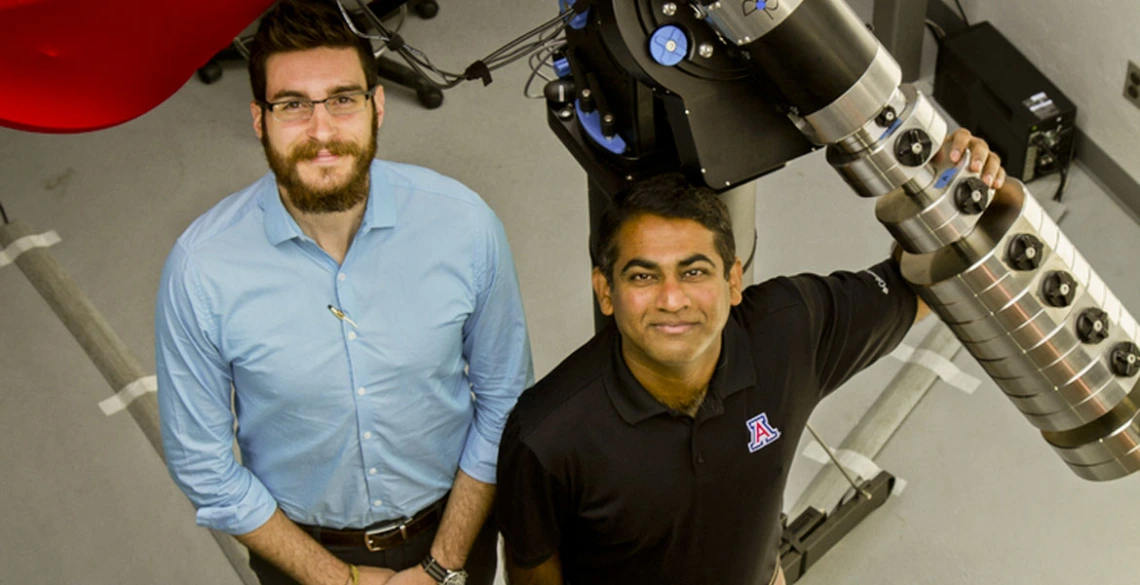UA Researchers Track Chinese Space Station as It Falls
As Chinese space station Tiangong-1 falls to Earth, UA astronomer Vishnu Reddy and aerospace engineering graduate student Tanner Campbell are following its path using technology they developed in four months -- and with less than $2,000.

Vishnu Reddy, right, and Tanner Campbell stand next to the RAPTORS telescope at the UA's Kuiper Space Sciences building. They would like to mount an optical sensor system on the telescope in the future. (Photo: Mari Cleven/UA Research, Discovery & Innovation)
A defunct Chinese space station, Tiangong-1, is expected to fall to Earth any day now — on March 31, give or take a few days. When it does, it will be the largest manmade object to re-enter Earth's atmosphere in a decade.
As the day draws near, Vishnu Reddy, University of Arizona assistant professor of planetary sciences, and Tanner Campbell, an aerospace and mechanical engineering graduate student, are tracking its re-entry using a $1,500 optical sensor they built in four months.
It's giving an opportunity for our students to play a role in space situational awareness."

